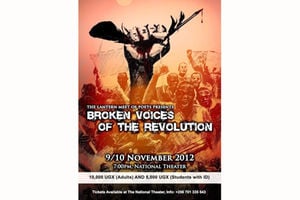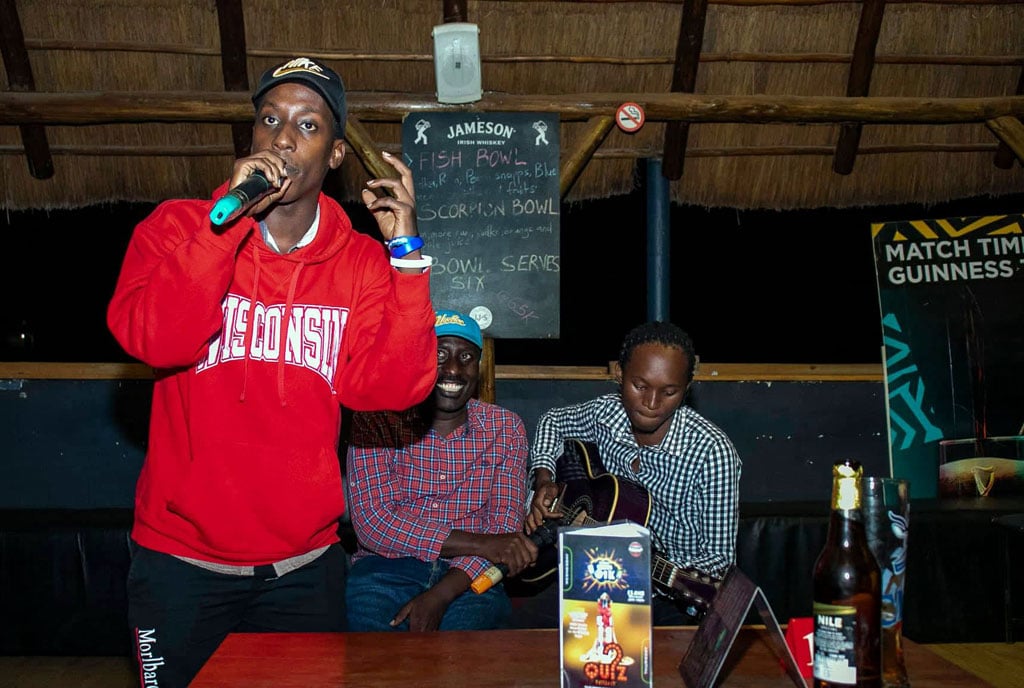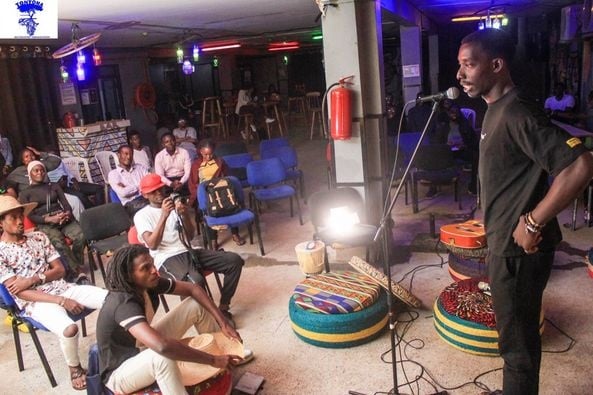
Revellers enjoy a poetry show at the Stand-up and Slam poetry comedy show at former Arena Bar and Restaurant in Kisimenti, Kampala, in 2020. A poetry and comedy night provides the ideal visual experience. PHOTO/COURTESY PHILIP MATOGO
Our creative universe is diverse. There are literally thousands of creatives in the shape of writers, comedians, poets, fine artists, dancers, to mention but a few. For their work to flourish, it needs to be visually accessible. This is especially so because human beings largely believe after they have seen.
Although it is hard to choose the ‘first among equals’ when it comes to which of the five senses is most important, there is wide consensus that sight marginally edges above other senses. Our visual experiences shape our outlook. Moreover, they lead the way when it comes to gathering information and basic learning.
What numbers are we looking at?
According to Threekit, a leader in Visual Commerce, which helps brands and manufacturers create visual configurators for their differentiated products, 90 percent of what we process is visual; we respond 60,000 times faster to imagery than text; 65 percent of the world is comprised of visual learners, and it’s been proven that using visual aids in classroom environments can improve learning exponentially
But the impact of visual experience doesn’t stop at learning and retention. It also has social implications. We form our “first impression” of people within a mere 50 milliseconds. And you know what they say about our first impression being our last. Indeed, the future of the creative economy will rest on the visual economy.
What is the visual economy?
It is the increasing importance and value of visual communication to drive engagement, growth, and success within organisations. So sight is an economic asset. To think otherwise would not only lead to unsightly economic consequences, it would be ignoring concrete socio-economic realities.
What’s the health of Uganda’s visual economy?
The visual economy in Uganda is growing, with a diversely increasing demand for local content and programming. There are more than 30 (free-to-air) TV stations serving an estimated population of 47 million. Almost three-quarters of the population own a mobile phone, although only 16 percent of these mobiles are smartphones.
The communications regulator, the Uganda Communications Commission (UCC), meanwhile, reported 23.7 million Internet subscriptions and an Internet penetration rate of 55 percent as of June 2022, thereby providing a significant opportunity for varying visual mediums to capture a substantial market share. The Uganda visual economy is in the middle of a long-term transformation as digital technology enables both greater choice for consumers and opportunities for incumbents and new entrants alike.
While the pace of change differs across different media, we see similar trends in each: high levels of investment; the dominant role of aggregators and platforms; the importance of owned and operated routes to market and distinctive content; the criticality of scale; and the centrality of Ugandan talent, intellectual property (IP) and storytelling to success.
The rise of online media services has affected the transition of audiences from broadcast media to online media, and has been a key trend for more than a decade. While the adoption of online services was initially associated with younger audiences, this is no longer the case and we are increasingly seeing consumption of online services being the norm for all audiences, with online the primary route to the market for many media players.
Walk us through how a content strategy should look like
Artists need to tap into a diverse range of programming, including news, current affairs, entertainment, cultural shows, and educational content. This will build strong local and international partnerships for content acquisition and curation.
The online audio market remains fast-moving. We have witnessed innovation in live, social and interactive audio, including X (Twitter) Spaces and Facebook Audio rooms. TikTok has also become an important part of the entertainment industry, leveraging its massive scale and pace of innovation.
Podcasting still accounts for a relatively small proportion of overall Ugandan audio time (five percent for those aged 15+). However, it is growing rapidly—20 percent of Ugandan online consumers listen to a podcast weekly compared to less than 10 percent four years ago.
Although radio is still the most-used platform for news overall, news consumption on TV is becoming more pronounced, with 60 percent of Ugandans accessing news online. As a result, the news industry has increasingly focused on developing its digital offer for consumers, investing in online journalism and improving the user experience across the web and Apps. However, the growth of global technology and social media companies, including Google and Meta, has significantly disrupted the news ecosystem, thereby dis-intermediating the relationship between broadcasters and consumers, challenging their business model.
The growth of big tech-owned news aggregators such as Apple News and Google’s Upday, and their ability to integrate these services into devices as a default, has added to this shift. In response to this challenge to online traffic and advertising revenues, many news companies are diversifying their income through the introduction of subscription and voluntary payment/membership.
The use of social media (e.g. Facebook, X) as a news source also remains very strong, especially for younger people (used by half of Ugandan adults overall and 79 percent of 16 to 30s for news).
How does poetry come into the picture?
To create popular visual products, poets will have to create highly entertaining ones. These could be poetry slam contests, which are spoken word poetry competitions where poets take up battle stances before judges and let rip with pyrotechnics.
The best poet according to the judges and audience, wins. Packaged as a gladiatorial showdown, they would appeal to a television audience’s taste for the cut-and-thrust of visual entertainment.
Is the visual economy ripe for the picking?
Yes, it can be leveraged by artists in order to reach a greater number of people. This is essential, especially in view of the American poet Walt Whitman’s claim: “To have great poets, there must be great audiences, too.” If we are to talk specifically about poetry, great audiences are conspicuous by their absence at poetry events. This is why visual economy, a means of reaching greater audiences, is essential to the growth and development of poetry in Uganda.
So far, poets have been limited to guest appearances on online and terrestrial visual mediums. Yet there are thousands of poets and poetry aficionados who could form solid viewership for a stand-alone poetry TV show.








